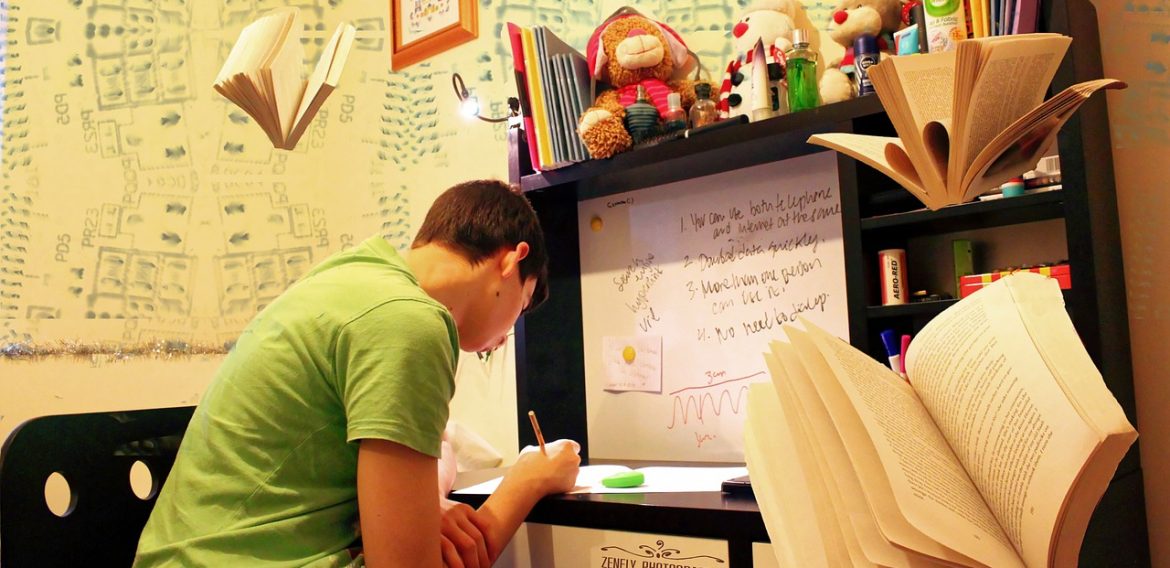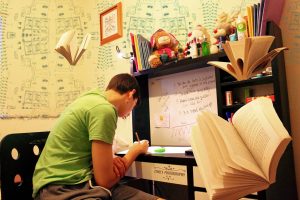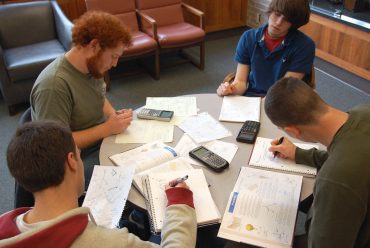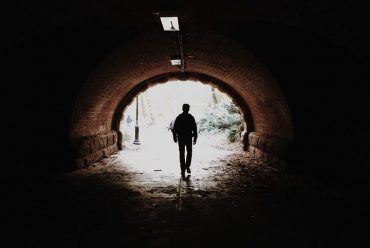Back to School: Designing a Study Environment for Success
While we may not get to have much input into how the school environment is organized we can have full reign on a study space at home. Designing a space at home with your teen where they can feel comfortable working and be successful should be part of your back to school plan.
A primary goal in educating youth is to make them lifelong learners. Students’ future success depends on how motivated they are to learn and develop new knowledge and ideas on their own. The foundation for these skills starts with study habits in and out of school. So much of our learning takes place outside of school.
The study environment needs to promote positive habits. We want students to think about the concepts they are learning, but we don’t want the environment to cause distractions from studying.
To learn more about your teen’s Power Environment and how they learn best I recommend investing in the Self-Portrait™ Power Traits Assessment. Scoring is automatic and you get immediate, printable results and correlated recommendations, plus downloadable guides. Contact Academic Coach, Melanie Black, to learn more.
Consider the following when designing a study environment:
sound
body position
interaction
lighting
temperature
food
color
time
Tips and Ideas for Creating a Study Environment Conducive to Productivity and Success
Location
Students have to think about where the best place is to study. It could be their room, outside on the porch with natural sunlight, at a public place, library, etc. Some students may prefer to study a certain subject in one place but study for another in a different place. When choosing a location consider how background noise affects studying. If studying in public, opt either for a quiet table in the corner or a spot right in the middle of it all, where there’s so much noise and buzz that you won’t get distracted by one conversation. And if all else fails, pick up and move away from distracting people when necessary.
Many students, especially those who are easily distracted or who have trouble keeping their attention focused, will find that it doesn’t take much noise to pull them away from their studying. Do you do better in silence, or are you the kind of student who thrives amid the buzz of background noise? Try a few settings, and pay attention to how each study session goes. Give the library a go one day, and see how that hushed environment works out. The next day, try a coffee shop or the park. Find a spot that’s comfortable, but not too comfortable, and make it your go-to study location.
Minimize Distractions
Students tend to be attached to smart phones constantly texting, and using social media. Students have developed the habit of checking these sources several times hourly. Those habits break into a their concentration during study, shifting their attention, and taking time and focus away from studying. This affects retention and the amount of time it takes to get work done.
To create a more effective work environment, create a distraction-free zone during work time. Clear off your desk so only the necessary study supplies are within reach. Keep the smart phones out of arm’s reach. Turn off notifications! Remove instant messaging from the computer and ban Facebook during study time. Self Control is a great app to block social media. Click HERE to read about six more apps for your PC or mobile device that will block social media distractions.
The Work Space
A student’s workspace should be set up so that they do not need to search each day for the supplies they need. If using a desk it should be set up the same way each day. If a student is studying at a communal table at home then they should have a nearby bin or tray with supplies where they can regularly find what they need without having to spend a lot of time thinking about how to prepare for studying.
Posture for Studying
It is common to see students writing briefly at a desk, then working from a laptop computer on the floor, and then lying down on the couch to read a book.
“It is hard to maintain the same level of concentration when lying on the floor or propped up in bed as when sitting at a desk. The body’s habit when lying down is to relax and sleep. It is not helpful for students to have to fight that tendency when studying. In addition, lying down promotes passive reading. It is hard to take notes or type while lying down. So students who are lying down are playing a less active role in their learning than those who are sitting up.” Edutopia
Click HERE to read my post about how posture affects students and simple techniques for keeping good posture.
Music
A lot of us listen to music while we read, write, and research. But does music help or hurt studying? The answer depends on the individual. Personally, I am a huge advocate for using music while studying. Music is rhythm and rhythm is structure. Our brain can use that structure to get things done. When the music comes on it tells you it’s time to go. Eventually after listening to the playlist often one can develop a sense of time. For example, if I hear Taylor Swift I might realize I am 15 min. into my work. Then, when I hear the Beatles I know I am close to the end of my 30 min work session and it’s almost time for a break. The playlist strategy can help students gain a sense of time and motivate them as well.
The Clock
When studying, the clock can be your best friend or your worst enemy. Keeping an eye on the time can give you a sense of urgency, or it can be that thing you keep glancing at, distracting you from your work.
Use the clock to your advantage. Set time-related goals: Before you start an assignment or task, decide what time you plan to finish. Use the clock to keep you moving forward. The pomodoro app is a great way to help students stay on task as well as take much needed breaks in between.
Other People
Study groups or buddies can be very helpful, or very frustrating. If you like to study in groups, come prepared. Show up with a clear agenda of what you want to accomplish, questions you want to discuss, help you might need. Avoid wasting time with chatting or without a clear direction for your study group.
Feng Shui and Motivation
Take some time to create a clean, organized, neat workspace for studying, and then make every effort to keep it that way. Remember that a cluttered learning environment clutters the mind.
When organizing your study area consider your motivators for success. If you have an award/ medal you have earned or certificate you are proud of hang it up and make it visible. Past successes motivate us to do well. If you have a college or university in mind post a picture or brochure related to that school to remind you of your long term goal, your why.
About Your Favorite Color From the Self Portrait Learning Assessment Manual by Learning Success Institute:
When people are surrounded by their favorite colors they tend to think more positively and feel more motivated.
• project / craft areas
Students can learn such techniques as:
• use a pen in your favorite color when taking tests or doing other paperwork
• wear your favorite color to a job interview or other important appointment
• add your favorite color (to whatever extent possible) to your room, your of ce,
your home, your desktop, etc.
• stay away from your least favorite color as much as possible!
Make a list as you brainstorm ideas with your teen. Don’t forget to bring it shopping! Hobby Lobby has great deals. Don’t forget your 40% off coupon! Look online first though as you might find some unique things and great deals.
Original post HERE








